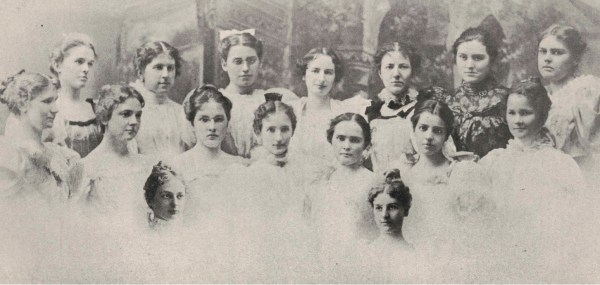Viruses and the science of smell
Junior Kavya Pai isn’t your typical neuroscientist. Her concern isn’t just with neurons; it’s with a mix of two unlikely candidates: viruses and smell.
Over the summer, Pai studied the islands of Calleja (IC) in mice, an area in the brain which is typically involved with smell. What she found, though, was surprising: the amygdala, the emotional center of the brain, was also inexplicably involved.
Pai used viral vectors, which can inject a chemical into specific cells. She used this viral vector to stain the islands of IC, using a green fluorescent molecule.
She expected only the IC to light up. But, surprisingly the amygdala did as well.
The lab believes that the green fluorescent protein may have moved from within the IC to the amygdala. This suggests a physical connection between the two structures and that the amygdala may somehow be involved with smell. Since the amygdala is known for its involvement in emotional reactions, memory and decision-making, the lab is unsure how it could be involved with smell processing.
When she started her research, Pai first had to learn how to perform surgery on mice. Like other researchers, she was faced with a dilemma as the coordinates of the IC were different on each mouse’s brain. To ensure accuracy, researchers use a calibrator each time with reference to other brain structures.
“[The IC] span a certain length in the brain,” she explained. “As you long as you target that length, you will get them.”
Pai attempted to the lower the IC’s visibility by delivering a molecule called Caspase but was unable to complete this process. This would have allowed the lab to see how the other parts of the cortex were affected by the IC. To move further, she had to find a way to see the effects which the IC have on other portions of the brain.
She sought to accomplish this by “turning off” portions of the IC.
She still had to use a viral vector. Now, however, she is trying to insert a small channel into the IC cells’ membrane. A normal cell membrane won’t let ions through. The small ion channel, however, lets ions into the neurons, inhibiting their ability to fire.
More importantly, the specific ion channel Pai inserted only activates in the presence of light. Pai explained that she could now effectively prevent a neuron from firing simply by pointing light at it.
She plans to measure the firing of other parts of the brain, after turning the IC off. This also serves as a test run for investigating Pai’s summer discovery, the mystery of the amygdala’s involvement. She hopes to investigate the brain structure by inserting ion channels and focusing light into the amygdala, while measuring the activation in the IC. This will allow her to see how inhibiting the amygdala would affect the IC.
This may seem complicated, and Pai agrees, but she also enjoys it.
To Pai the most interesting part of smell is in the cerebral cortex, the top of the brain that processes information. She points to the lab’s questions about why and how the brain allows conscious attention of only certain smells. The lab’s interest was sparked due to the fact that the IC are known to shrink over time.
“It’s difficult to test,” she said. “It’s a complex process. I like the challenge.”

Kushagra Gupta is a cognitive science and biology student and is working towards a masters in medical physiology. He's served as The Observer’s The Director...

















